BJ's Spring: all it is cracked up to be... and more!
I love the Spring. After the cold grismal days of winter it is such a pleasant change to see the world bursting forth once again – often in a blaze of colour to add to the refreshing overall effect. It’s enough to make you cry – literally!
But living here in Beijing, I’m always afraid to blink, lest I miss this incredibly short season. One week there are bare trees and snow still lies on the ground; the next there is a rush of leaves on the trees; blossoms abound the next week; and by the end of the month it is all over bar the shouting. Then the ferocious summers take over and the plants dive for cover, just like us poor mortals.
By coincidence, an old Swedish friend had hit town this week to experience the Beijing phenomenon; and definitely on her wish list of places to visit was the Botanic Gardens. She couldn’t have timed her trip better. Not only did we go to the Botanic Gardens, but also started off in the Fragrant Hills Park just up the road from there. The rest of Beijing decided to do the same, and the normally 15 minute bus ride from the end of the subway line instead lasted over an hour and a half.
But it was worth it! Everywhere was a blaze of colour, with these peach trees - Prunus Amygdalus Persica – taking centre stage.
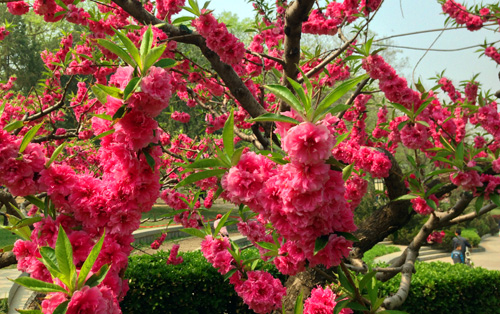
There are loads of similar but oh-so-different trees to wander around… such as these Amygdalus persica L. cv. Juhuatao which this photo simply cannot do justice to.
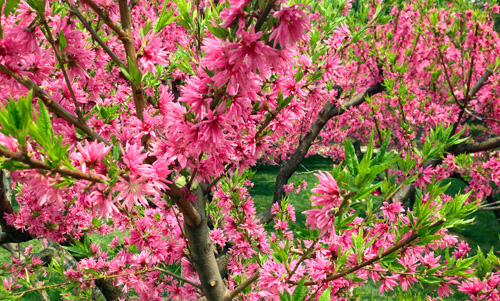
Looking for a tree that boasts three different colours of blossom all on the same branches? Look no further than this Prunus persica Versicolor. Nature is so clever, I always think!
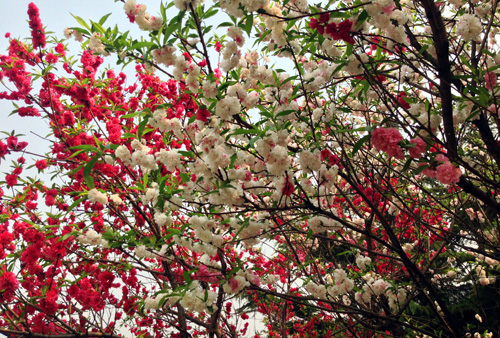
Last time I came over this way I happened to notice that the police information boxes were an “o” short...
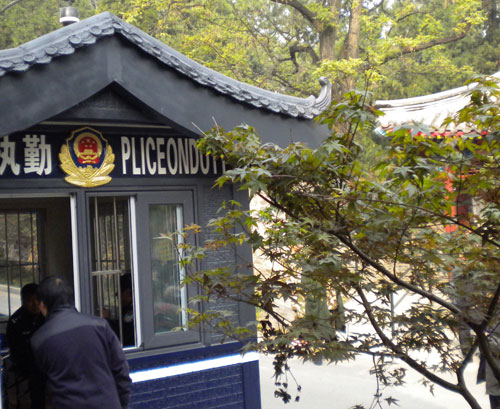
I can’t believe that those in authority actually read this blog; but certainly someone had taken the bold decision to re-sign these police huts. And now the “plice” can be proud to call themselves “police” once more... errr, woops!
But who cares about a misspelling or two when nature is running amok without a care in the world? Take these ranunculus, for instance (or should that be ranunculi?): a splash of colour which leads the eye onto other vistas to explore.
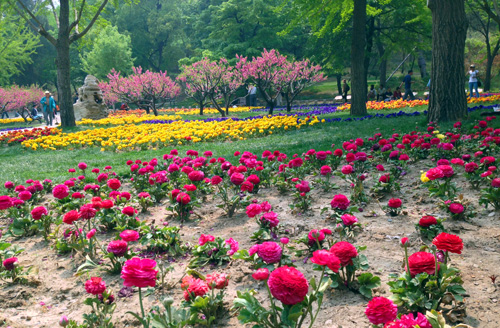
As for the peony section, no one does peonies better than the Chinese. But did you know the flower is named after Paeon, a Greek god of healing, because the plant apparently contains an alkaloid that is meant to hasten childbirth?
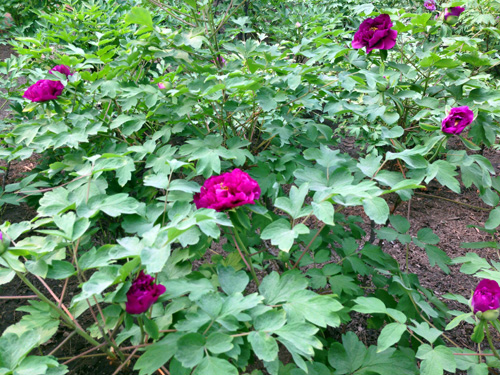
There are many varieties of peony, but one of my favourites has to be these large white ones that you can see a mile off.
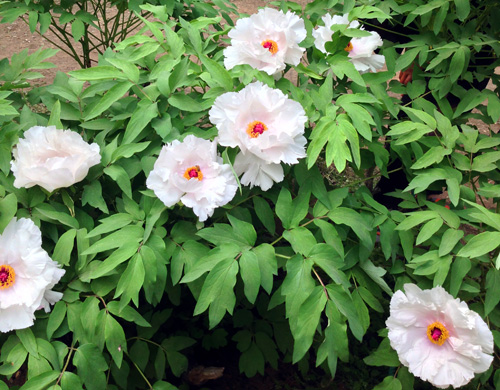
Of course, not every flower blooms at exactly the same moment here in Beijing. These hyacinths, for instance probably peaked yesterday, or perhaps even the day before that; so they are already looking a little sad and sorry for themselves.
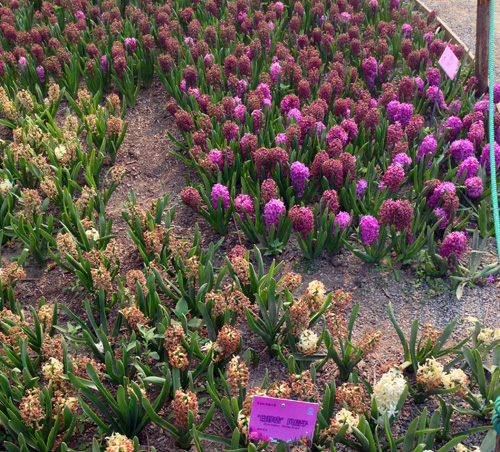
But what the garden lacks in hyacinths, it amply makes up for with these Crown Imperial Fritillaria. Now this is truly a plant worth walking round a flower bed or two to see. It has stunning orange petals and the tall stems carry rings of bell-shaped flowers which hang upside down from the very top, giving it a unique look.
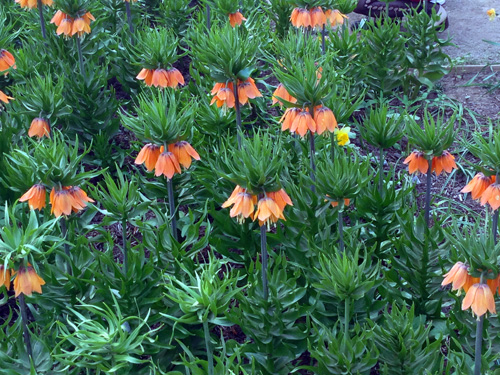
I used to grow these back home in the UK; and one thing I always remember about them is that the instructions that come on the packet say that the bulb should be planted on its side in very well drained soil to avoid rotting. Other than that they are a cinch to grow.
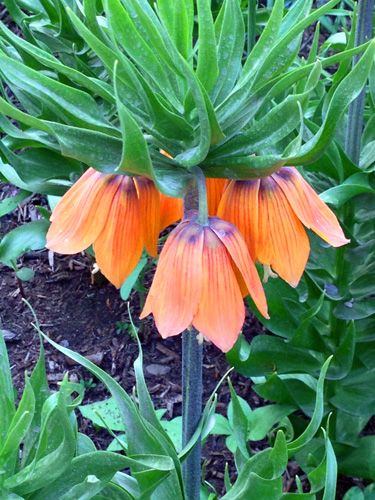
As for the tulips, well… what can I say? I used to think that the tulip fields in Keukenhof in the Netherlands took some beating. But now? Move over Holland. You have definitely met your match here in Beijing!
According to Wikipedia, the word tulip entered the English language by way of the French: tulipe and its obsolete form tulipan, or from the Ottoman Turkish word tülbend meaning "muslin" or "gauze”, which itself is derived from the Persian: delband – meaning a "turban”, as they say that the shape of a tulip flower looks like a turban.
Mind you, like all things on the internet, it depends on which website you are reading at any one time to know what to believe. According to www.chinaflowerscn.com, for instance, “The general tulip is a symbol of the perfect lover. Why the general tulip is such a symbol is not as though to imagine as one think as the answer is of the Freudian nature. Yes, the tulip symbolizes a phallus, thus being the symbol of the perfect lover. It can not be more straightforward than that.”
Errr, well perhaps it could be just a little straightforward, guys, but thanks for that insight; though from my observations (not, you understand, that I make it a habit!) I have never encountered a Chinese phallus looking remotely like a tulip!
Other received wisdom from the ’net tells me that tulips are indigenous to mountainous areas with temperate climates and thrive where there are long, cool springs and dry summers. And that probably explains why I have never, outside this botanic garden, seen a single tulip in Beijing, though it is said that there are 100 tulip species in China. The tulip's centre of diversity is in the Pamir, Hindu Kush, and Tien Shan mountain ranges and they are also native to the Northwest of China.
But enough of such trivia. Take a gander at these lily-flowered tulips to get you salivating and reaching for your tulip catalogue to decide what to grow in your garden next year…
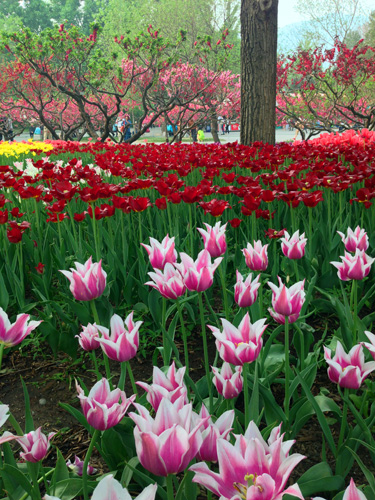
Pink and white not your scene? Maybe you should turn to the Rembrandt instead (though these do, admittedly, look a little past their sell-by date).
According to our friends on chinaflowerscn.com again, “Giving a variegated tulip to someone is a tad personal since it means ‘you have beautiful eyes’. The variegated tulip is a very nice compliment and should be treated as such.”
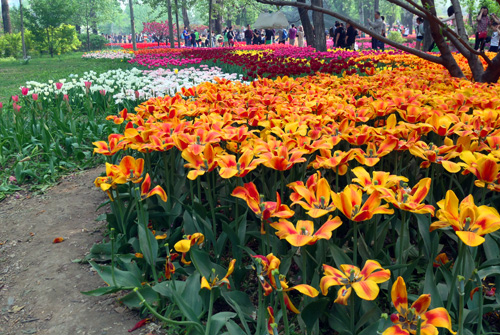
Red tulips are, it would appear, more of the questioning type of symbol that either means that the receiver should believe in the giver or is a declaration of one’s love to the receiver. During the Victorian era, when the language of flowers was at its peak in popularity, one could answer by taking the flower either with one’s right or left hand – right for a positive response and left for negative.
However, in Persia – according to Wikipedia’s insight – to give a red tulip was to declare your love. The black centre of the red tulip was said to represent the lover's heart, burned to a coal by love's passion.
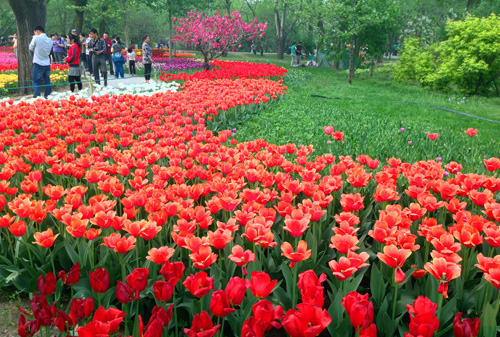
I have to admit, however, to liking yellow tulips the most – perhaps because I am a little on the colour blind side? Or perhaps because a yellow tulip simply means “there is sunshine in your smile”, which in itself means that your smile brightens the day of everybody around him or her. The yellow tulip flower meaning is simply a discrete compliment, nothing more and nothing less. Well thanks once again to chinaflowerscn.com for putting us straight on that one.
Mind you, Tulipmania tells us that in Persia, to give a yellow tulip was to declare your love hopelessly and utterly. So maybe your favourite blogger is just a hopeless romantic?
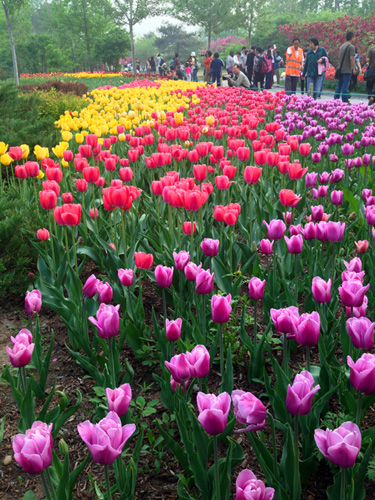
But whether it is yellow, red, purple or variegated, who cannot fail to be impressed by these vistas of tulips beguiling the visitors to BJ’s Botanic Garden?
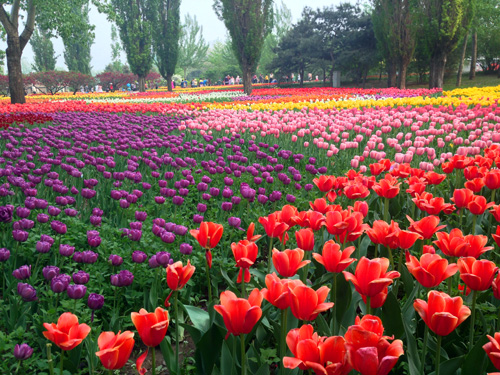
I mean, they’re simply everywhere; but for how many days? – that’s the thing.
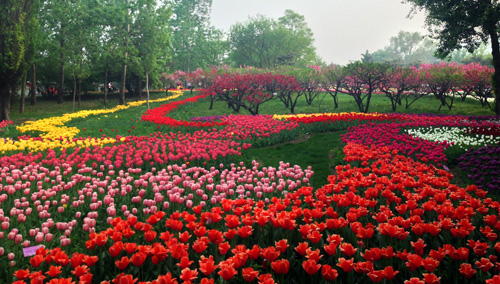
Yes, Spring / Summer is once more in the air. And what better place than Beijing to enjoy it?
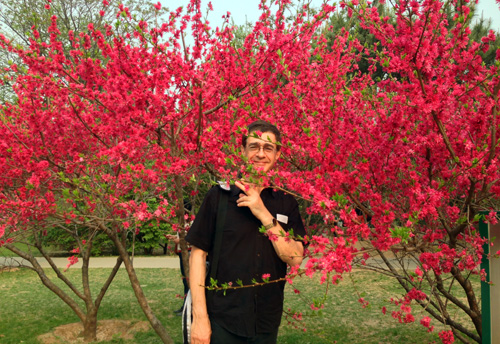
It’s a shame, though, that it is so short lived; and then the blossom seeds start filling the air, and for the next few days I am down with a bad bout of hay fever. I reach for the antihistamine pills as my eyes start watering and itching, while my nose starts dripping and my face contorts into an ah-ahh-ahhh-whooshahhhhhhh.
Somehow, though, it is all worth it. You can surely forgive nature trying to get its own back on you when it has all been so beautiful!
Line 4 to Beigongmen, exit A. Take 331 or 563 bus to WoFoSi
